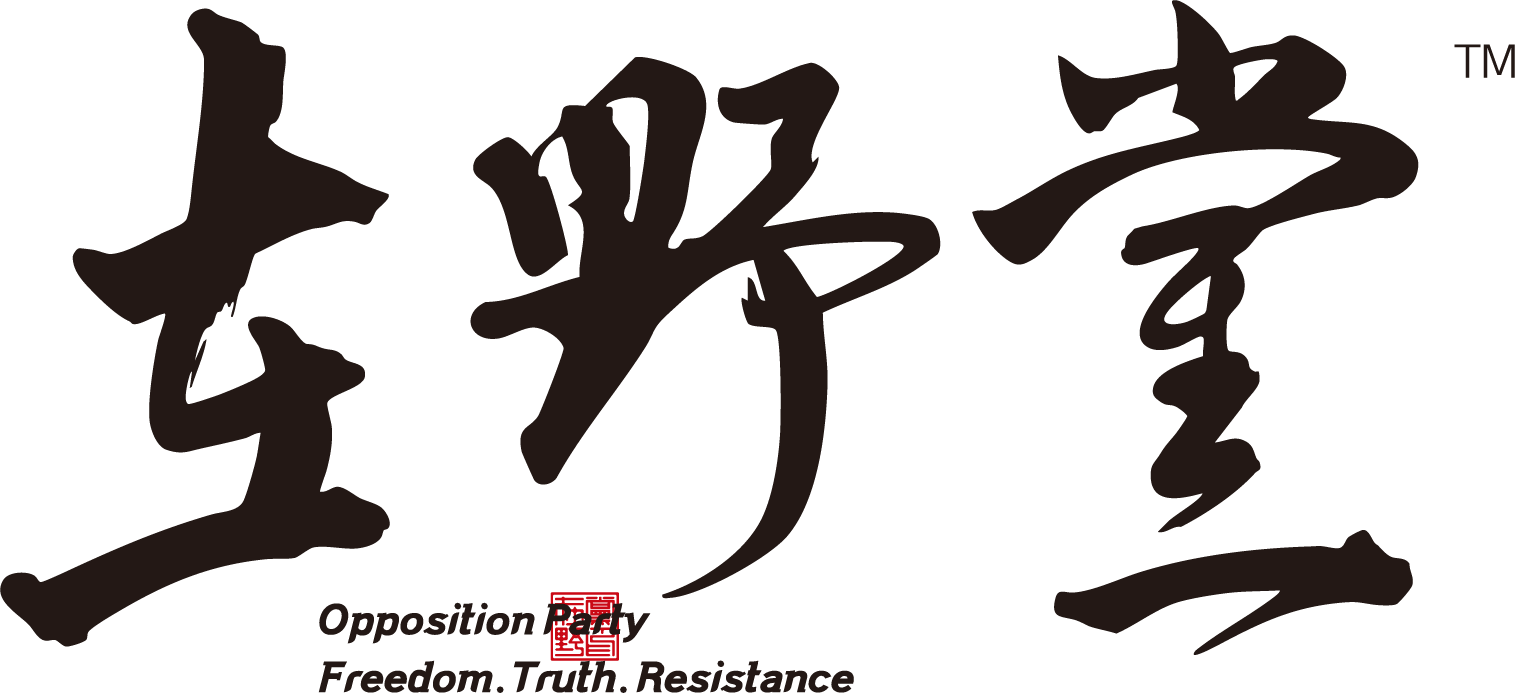Explaining the Future of Chinese Democracy through the Five-People Constitution – Part IV
Article 2 of the Constitution: The Cornerstone of Civil Governance and Freedom
作者:何清风
编辑:冯仍 责任编辑:罗志飞 翻译:鲁慧文
引言:公民共建的民主愿景
《五民宪法》以民治、民主、民权、民生、民族为核心,构建了中国民主未来的宪政框架 。第一条明确“先有人类后有国家,是公民治理国家”,奠定了公民作为国家主体的宪政原则。而第二条进一步阐明国家的本质与目的:“中华民族联邦共和国是生活在中华民族联邦共和国领土上的所有公民,为了自由、民主、平等及和谐的生活而共同组建的国家,国家政权建立的根本目的是保障所有公民的合法权利不受侵犯。对于公民的私权,法无禁止皆可为。”这一条款以公民为本,强调自由与权利的至上性,为公权组织提供了价值指引。本文将深入解读第二条,剖析其在五民主义框架下的深层含义,揭示其对中国民主未来的启示,激发读者对宪政理想的共鸣与期待。
第二条的核心理念:公民共建的国家
第二条开篇即定义“中华民族联邦共和国”是“所有公民”为了“自由、民主、平等及和谐的生活”而“共同组建”的国家。这一表述延续了第一条“先有人类后有国家”的逻辑,强调国家并非抽象的实体,而是公民基于共同目标自愿缔结的共同体。关键词“共同组建”凸显了民治的精髓:国家不是外加于公民的强制结构,而是公民主动构建的治理平台。这种设计彻底颠覆了传统国家观念,公民不再是被动的服从者,而是国家的创造者、拥有者与主权者。“自由、民主、平等、和谐”作为建国的目标,进一步明确了国家的价值取向。自由保障了个人自主,民主确保了民意主导,平等消除了特权与歧视的制度基础,和谐促进了社会团结。这四者相辅相成,构成了五民主义的核心体现:民治通过公民的共同参与实现,民主通过选举与监督落实,民权保障自由与平等,民生促进和谐的社会环境,民族则在“中华民族联邦共和国”的框架下维护国家认同与文化多样性。
国家政权的根本目的:保障公民权利
第二条的核心在于明确国家政权的根本目的:“保障所有公民的合法权利不受侵犯。”这与第一条列明的五项基本权利(生命权、自由权、财产权、反抗压迫权、选举与被选举权)一脉相承,强调政府等公权机构存在的合法性在于保护公民的权利,而非凌驾于公民之上。公权机构不仅是公民权利的守护者,还必须通过制度设计确保公民权利免受任何形式的非法侵害,无论是来自国家、组织还是个人。这一原则对政府等公权组织提出了明确要求:公权组织的权力必须严格限定在宪法框架内,任何超越保护公民权利的行为都是非法的。换言之,政府等公权机构的功能不是统治或控制,而是服务与赋能。这种理念为后续章节的设计提供了方向:公权机构必须以公民权利为中心,通过分权制衡、透明治理和公民参与,确保权利保障的彻底性。
私权至上:法无禁止皆可为
第二条同时明确其对私权的保护:“对于公民的私权,法无禁止皆可为。”这一原则是对自由权的极致表达,意味着公民在法律未明确禁止的领域享有完全的自主权。这种设计不仅是对个人自由的保障,也是对公权机构公权力的根本约束。传统宪政设计往往通过列举权利来保护公民,而《五民宪法》第二条则以开放性原则,将自由的边界推至最大:只要不违法,公民即可以自由追求个人目标、表达意见、创造财富、组织社群等。“法无禁止皆可为”还体现了五民主义中民治与民权的融合。民治要求公民自我管理,自主决定生活方式;民权则通过法律保障这种自主性不受侵犯。这种设计不仅赋予公民无限的可能性,也对公权机构提出了更高要求:立法必须审慎,法律的制定不得随意限制公民自由,且必须经由民主程序反映民意。这一原则为公权组织设定了底线:任何限制私权的法律,必须证明其必要性与合法性,否则即为违宪。
对公权机构的启示
第二条为后续章节的设计提供了明确的宪政框架。首先,公权机构必须是民主的,通过公民选举产生,确保行政、立法等机构反映民意。民主不仅是选举制度,更是公民参与治理的机制,例如通过公民倡议、公投或监督,确保公权行权行为符合“保障公民权利”的目的。其次,公权力必须是有限的,其权力严格限定在保护公民权利的范围内,任何扩张权力的行为都将受到宪法约束。此外,公权机构还需体现平等与和谐,通过公平的政策与资源分配,促进社会团结,消除阶层与族群间的对立。同时,公民参与贯穿始终,例如通过全民公投或公民自治委员会,参与重大决策。这种设计确保公权机构不仅是公民的工具,更是民治理念的实践平台。
对中国民主未来的意义
第二条以其对公民主体地位的肯定和对私权的极致保护,为中国民主的未来提供了深远启示。首先,它回应了传统政治中“国家至上”的局限,将公民置于国家之上,赋予公民构建与治理国家的主动权。这种设计避免了威权体制对自由的压制,同时通过强调平等与和谐,防范了西方民主中因过度个体主义导致的社会分裂。其次,“法无禁止皆可为”在当今技术与全球化背景下尤为重要。人工智能、数据隐私等新兴挑战对公民自由构成威胁,而第二条为公权机构设定了明确的红线:除非法律明确禁止,公民在数字空间、经济活动等领域享有充分自由这一自由的行使需建立在不侵犯他人权利及社会秩序之上。这种开放性不仅激发创新,也为中国民主融入全球文明提供了空间。最后,第二条赋予公权机构的使命——保障公民权利而非统治奴役人民——为中国民主提供了一条“第三条道路”。它既不同于西方代议制的低效与民粹风险,也避免了集权体制的压迫性。通过公民共建、权利至上的原则,《五民宪法》为中国民主勾勒出一个自由而有序的未来。
结语:自由与民治的宪政灯塔
《五民宪法》第二条以“公民共建国家”与“法无禁止皆可为”为核心,确立了公权组织的民治原则与自由基石。它不仅为公权机构设计提供了方向,也为中国民主的未来奠定了基本原则。。在这一条款的指引下,政府等公权机构成为公民意志的延伸,权利成为宪政的底线,自由成为社会的灵魂。
“五民主义”奠基人、《五民宪法》撰写人何清风。
一身正气、两袖清风,何清风。
Explaining the Future of Chinese Democracy through the Five-People Constitution – Part IV
Article 2 of the Constitution: The Cornerstone of Civil Governance and Freedom
By He Qingfeng
Editor: Feng Reng | Chief Editors: Luo Zhifei, Lu Huiwen | Translated by Lu Huiwen
Introduction: A Democratic Vision Built by Citizens
The Five-People Constitution constructs a constitutional framework for China’s democratic future based on five core principles: civil governance, democracy, civil rights, people’s livelihood, and national identity. Article 1 clearly states: “Humanity precedes the state, and the people govern the state,” establishing the principle of citizens as the foundation of the nation. Article 2 further clarifies the nature and purpose of the state:
“The Federal Republic of the Chinese Nation is a country jointly established by all citizens living within its territory, for the purpose of a free, democratic, equal, and harmonious life. The fundamental purpose of state power is to protect all citizens’ legitimate rights from infringement. Regarding private rights, anything not prohibited by law is permitted.”
This article is citizen-centered and upholds the supremacy of liberty and rights, providing value-based guidance for public authority. This article will unpack Article 2, analyze its deeper meaning within the framework of Five-Peopleism, and explore its significance for the future of Chinese democracy, aiming to evoke resonance and anticipation for constitutional ideals.
Core Concept of Article 2: A Nation Built by Citizens
Article 2 opens by defining the Federal Republic of the Chinese Nation as a country “jointly established” by “all citizens” for a life of “freedom, democracy, equality, and harmony.” This continues the logic of Article 1—that the state is not an abstract entity, but a community voluntarily formed by citizens with shared goals. The phrase “jointly established” highlights the essence of civil governance: the state is not an externally imposed authority but a governance platform actively created by the people.
This design fundamentally overturns traditional notions of the state. Citizens are no longer passive subjects but creators, owners, and sovereigns of the nation. The goals—freedom, democracy, equality, harmony—clarify the value orientation of the state. Freedom guarantees individual autonomy; democracy ensures the primacy of public will; equality eliminates institutional privilege and discrimination; harmony promotes social unity. Together, these principles represent the core of Five-Peopleism: civil governance through collective participation, democracy via elections and oversight, civil rights to ensure freedom and equality, people’s livelihood for a harmonious society, and national unity through the “Federal Republic of the Chinese Nation.”
The Essential Purpose of State Power: Protecting Citizens’ Rights
The heart of Article 2 lies in stating that “the fundamental purpose of state power is to protect all citizens’ legitimate rights from infringement.” This aligns with the five fundamental rights laid out in Article 1: the right to life, liberty, property, resistance to oppression, and electoral participation. It underscores that the legitimacy of government and other public institutions lies in protecting citizens’ rights, not ruling over them.
Public authorities are not only guardians of rights but must also be institutionally designed to prevent any infringement from the state, organizations, or individuals. This principle imposes clear constraints: all public power must operate strictly within the constitutional framework. Any action beyond the protection of citizens’ rights is unlawful.
In other words, the function of government and public authorities is not to dominate or control, but to serve and empower. This principle guides later sections of the constitution: public institutions must be citizen-centered and ensure comprehensive rights protection through power division, transparency, and citizen participation.
Supremacy of Private Rights: Anything Not Prohibited by Law Is Permitted
Article 2 also establishes protection for private rights:
“Regarding private rights, anything not prohibited by law is permitted.”
This principle expresses freedom in its fullest form—citizens have complete autonomy in areas not explicitly forbidden by law. It both guarantees individual liberty and fundamentally restricts the power of the state.
While traditional constitutional systems protect rights by enumerating them, Article 2 adopts an open-ended principle, pushing the boundaries of freedom to the maximum: as long as it is not illegal, citizens are free to pursue personal goals, express opinions, create wealth, and form communities.
This principle also embodies the fusion of civil governance and civil rights within Five-Peopleism. Civil governance calls for self-management and self-determined lifestyles, while civil rights ensure that such autonomy is legally protected.
This design not only grants citizens unlimited possibilities but also places higher demands on public institutions: legislation must be cautious; laws must not arbitrarily restrict freedom and must reflect public will through democratic processes. The baseline for public power is clear—any law that limits private rights must justify its necessity and legality; otherwise, it is unconstitutional.
Implications for Public Institutions
Article 2 provides a clear constitutional framework for subsequent articles. First, public institutions must be democratic—formed through citizen elections—ensuring that executive and legislative bodies reflect public will. Democracy is not just about elections; it is also about participatory governance, including initiatives, referendums, and oversight to ensure that the exercise of public power aligns with the goal of “protecting citizens’ rights.”
Second, public power must be limited—strictly confined to the scope of rights protection. Any expansion of power must be constitutionally restrained.
Moreover, public institutions must embody equality and harmony through fair policy and resource distribution, promoting unity and eliminating class and ethnic divides. Citizen participation must be central throughout—through referendums or civic councils—in major decisions. This ensures that public institutions are not only tools for citizens but also platforms for practicing civil governance.
Significance for the Future of Chinese Democracy
Article 2, by affirming the citizen as the sovereign and protecting private rights to the fullest, provides profound insights for the future of Chinese democracy.
First, it challenges the traditional “state supremacy” mindset, placing the citizen above the state and granting them the right to construct and govern it. This design counters authoritarian suppression of liberty and, by emphasizing equality and harmony, prevents the fragmentation seen in Western democracies caused by excessive individualism.
Second, “anything not prohibited by law is permitted” is especially vital in the context of technology and globalization. Emerging challenges such as AI and data privacy threaten civil liberty, and Article 2 draws a clear red line for public institutions: unless explicitly forbidden, citizens enjoy full freedom in digital spaces and economic activity—so long as they do not infringe others’ rights or social order. This openness fosters innovation and integrates Chinese democracy into the global civilization.
Finally, Article 2 gives public institutions a mission—not to rule or enslave, but to protect. This provides a “third way” for Chinese democracy: it avoids the inefficiency and populist risks of Western representative systems, and it breaks free from the oppression of authoritarian regimes. Through co-creation by citizens and a rights-first principle, the Five-People Constitution outlines a future of freedom and order for China.
Conclusion: A Constitutional Beacon of Freedom and Civil Governance
With “citizens jointly building the state” and “anything not prohibited by law is permitted” at its core, Article 2 of the Five-People Constitution establishes civil governance as the principle of public institutions and freedom as their foundation. It not only guides the design of state power but lays the cornerstone for the future of Chinese democracy. Under this article’s guidance, public institutions become extensions of citizen will, rights become the constitutional bottom line, and freedom becomes the soul of society.
He Qingfeng, founder of Five-Peopleism and author of the Five-People Constitution
A man of integrity, sleeves full of wind—He Qingfeng.







谢晶芳-rId5-1280X853.png?w=100&resize=100,70&ssl=1)
